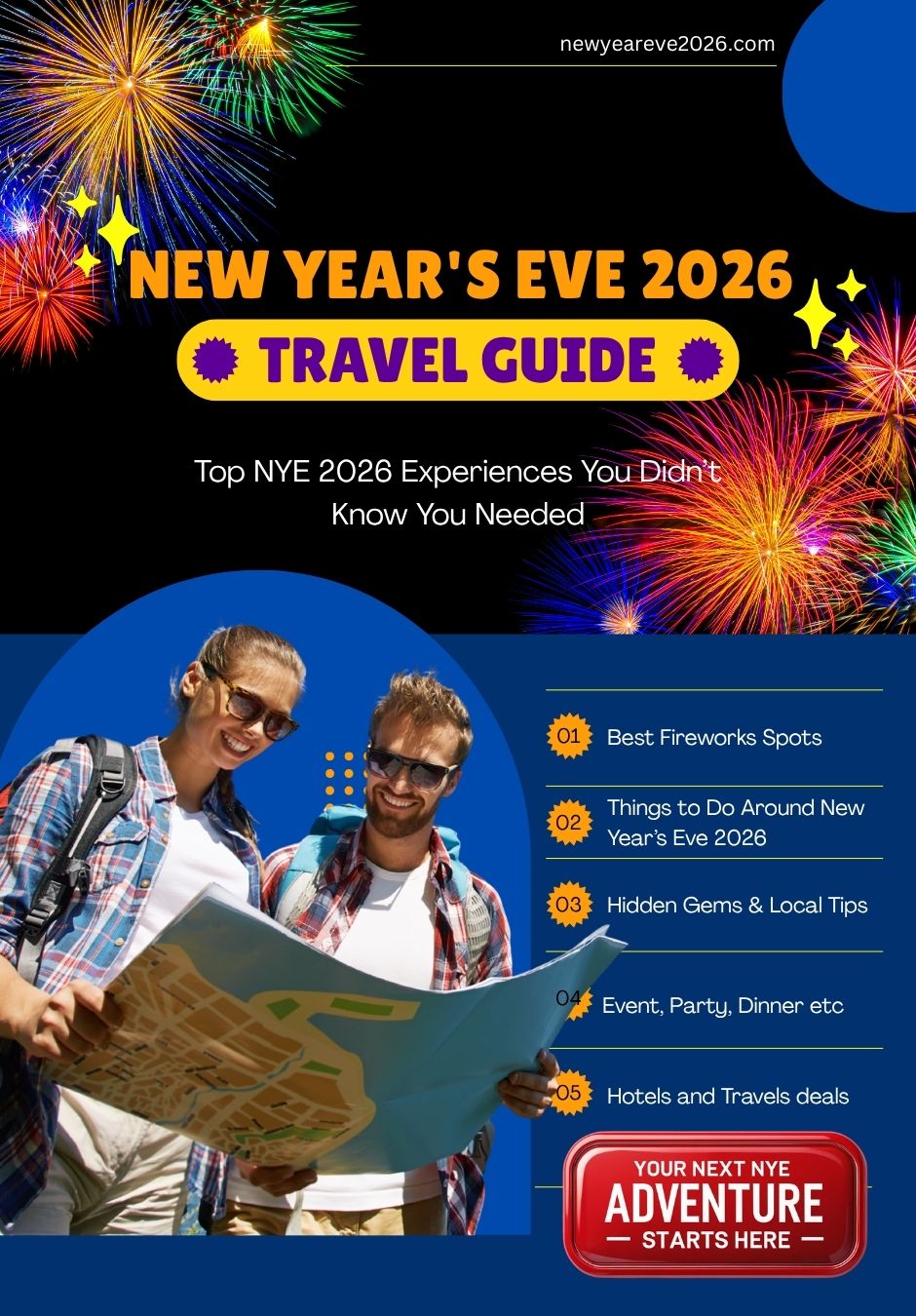New Year’s Eve 2026 on Sumba Island, Indonesia unfolds very differently than in Jakarta or Bali. The island’s heartbeat is slower, wilder, tempered by wide savannahs, lonely beaches, and rituals that echo an older rhythm. Here, December 31 feels like a threshold rather than a grand gesture—a night to watch stars, listen to waves, and let the new year come softly across land and sea.
New Year’s Eve 2026 in Sumba Island Ultimate Guide, CLICK HERE
Where Time Slips & Silence Speaks
On Sumba, there is room to breathe. As dusk deepens, small coastal villages turn their eyes to the horizon, fishermen haul in last nets, embers flicker in cooking fires, and children run barefoot along reefs. The twilight feels vast—open, vulnerable, and full of expectancy.
Hotels and resorts—in places like West Sumba or near Waikabubak—prepare dinners on terraces overlooking surf and reef. Palapas open to breeze, lanterns strung between frangipani trees. If you’re seeking the sweetest view, consider booking a beachside villa or terrace dinner now
Elsewhere, community gatherings may be modest—local musicians strumming gamelan or sasando, voices raised in songs, old and new. In remote corners, the sound of wind across mangroves or distant horses echoes under moon.
The Night Deepens: Ritual, Fire, and Water
As darkness thickens, the island leans into water and firelight. On beaches like Walakiri or Pero, visitors might gather by tide lines to reflect the sky in shallow pools, walk out toward silhouetted mangroves, or wade through the surf as soft waves lap ankles.
Some resorts or boutique lodges on Sumba have begun to stage their own small fireworks or light shows for guests. I heard of a property doing a countdown bonfire, acoustic guitar, and lantern release—a contrasting blend of modern celebration and elemental simplicity. If that balance appeals, browse boutique resort NYE offerings now
Near midnight, a gentle flare rises—sparks over reef break, reflections dancing in water, laughter across planks. The sky blooms slowly, and when it does, it does so for everyone who looked upward.
Between the Islands: Journeys & Portals
Because Sumba is large and its roads rural, many guests choose to combine day trips or island perambulations with their New Year’s night. Before evening:
-
Travel toward Weekuri Lagoon—a hidden saltwater pool behind cliffs. It’s perfect for a tranquil afternoon dip before festivities begin.
-
Venture inland into adat villages like Ratenggaro or Praijing. In the late afternoon, village elders might host small ceremonies or invite travelers to witness offerings. Set aside time earlier in the day for a cultural visit.
-
Visit Manupeu Tanah Daru National Park, with its waterfalls and dry forest slopes rising toward hills. A short walk through the park can be a quiet interlude before night’s rush.
These journeys anchor you—to land, to people, to time—and make midnight more than a spectacle: it becomes part of where you are.
Where to Watch & Where to Wisper
Sumba lacks towering vantage points or skyscrapers. Instead, vantage emerges in these places:
-
Beachfront edges: Stand where reef meets surf at dusk; you’ll see fireworks or flares across open water lines.
-
Resort terraces and palapas: Many properties run elevated decks just for view seekers. If you want a private terrace, check for resort packages now.
-
Ridgetop at dusk: A drive late in the evening can take you to small ridgelines between villages—less light, no crowd, only stars and sky.
-
On the water: A small boat or paddle craft, launched near midnight, might carry you a little offshore, giving a wider panorama of coastal lights and sparkles. Some resorts or operators may provide midnight boat rides—look into local offerings.
-
Mangrove boardwalks near Walakiri: If you time low tide just after midnight, walking among flooded roots might let you glimpse light reflections across branches.
Each place yields a kind of intimacy: you see what you care to see, in light shaped by wind and water.
Local Rhythms, Myth & Memory
Sumba’s indigenous culture—weaving, megaliths, Marapu beliefs—threads quietly through the night. The uma mbatangu (traditional peaked houses) cluster in adat villages, and at midnight their silhouettes stand tall in memory of ancestors.
Some local communities may host small ritual gatherings—offerings, blessings, chanting among clans. It is rare, but possible, to be invited into a courtyard where drums sound under stars. If your trip allows, inquire locally about village ritual access.
At midnight, the island stops not for extravagance, but to pause. The surf, the wind, the night—all breathe together. The new year isn’t announced loudly; it occurs in reflections, in exhalations, in the rising of new light beyond horizon.
The Dawn Just Beyond Midnight
After the fireworks linger, people drift back inside. In resorts, lounges glow—wine, tropical fruit, quiet conversation. Some may sneak out for star walks. A few may swim under moon shimmer in calm reef lagoons.
Others sleep early, trusting the sea’s lullaby beneath palm shadows. In rooms opening to the sea breeze, the night’s echo remains in curtains, in sand beneath the bed, in the distant hush of waves.
And somewhere—just somewhere—the first ray of 2026 will touch reef or hilltop, slow and gentle, telling us the island waits for morning.
If your heart leans toward nights lived in openness—where light is scattered not staged—Sumba invites you. Its New Year’s Eve may not dazzle by scale, but it lingers by spirit, by salt, by sky. Choose a place facing ocean, bring stillness, and let each spark settle in memory.
